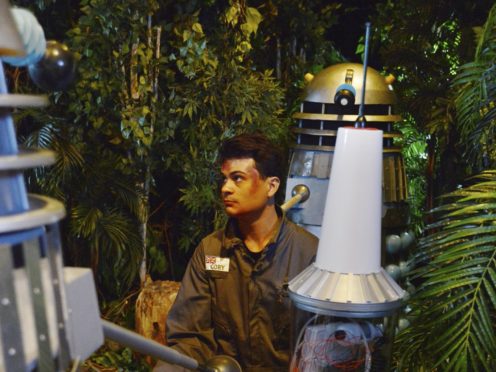A lost episode of Doctor Who featuring the fearsome Daleks has been faithfully recreated by university students more than half a century after it aired on the BBC.
Footage of Mission To The Unknown, which premiered on BBC One in 1965, is thought lost from the broadcaster’s archives.
The episode was meant to serve as an introduction to the 12-part story The Daleks’ Master Plan and notably featured none of the third series’ cast such as William Hartnell as the Doctor.
Students, graduates and staff at the University of Central Lancashire used the original script and 1960s production techniques to recreate the classic look of the series.
The result will premiere on the Doctor Who YouTube channel at 5.50pm on October 9 to mark the anniversary of the original broadcast.
The episode has received support from Doctor Who luminaries.
Nicholas Briggs, who voiced the Daleks and Cybermen in the original show, lends his vocals to the episode’s Daleks.

Doctor Who stars including Peter Purves, who played 1960s companion Steven Taylor, and Edward de Souza, who played Marc Cory in the original episode, also visited the set during filming.
The project was masterminded by the university’s pro-vice chancellor of digital and creative industries Andrew Ireland.
He said: “It is such a loss to our cultural heritage that so many episodes of 1960s Doctor Who are missing from the BBC archives.

“This project presented us with an exciting opportunity to address that, to explore a new way of bringing these missing slices of TV history to life, and in the process, help students learn their craft by comparing contemporary production methods with historical approaches.
“The project gave so many people great experiences, and it is wonderful to see the Daleks menacing a black and white jungle once more.”
Digital publishing manager for Doctor Who at BBC Studios Luke Spillane said: “I’m delighted that we will be bringing the story of Space Security agent Marc Cory to our 1.3 million subscribers on the Doctor Who YouTube channel as it is such a fantastic recreation, made lovingly with real craft and expertise by everyone at the University of Central Lancashire.
“I hope audiences around the world can imagine that it’s tea time on the 9th October 1965 as they rather excitingly watch a black and white episode of Doctor Who premiere on their television sets, mobile phones and tablets.”
Fans can also watch a making-of documentary created by the YouTuber Josh Snares, a freelance amateur filmmaker with an avid interest in Doctor Who.
